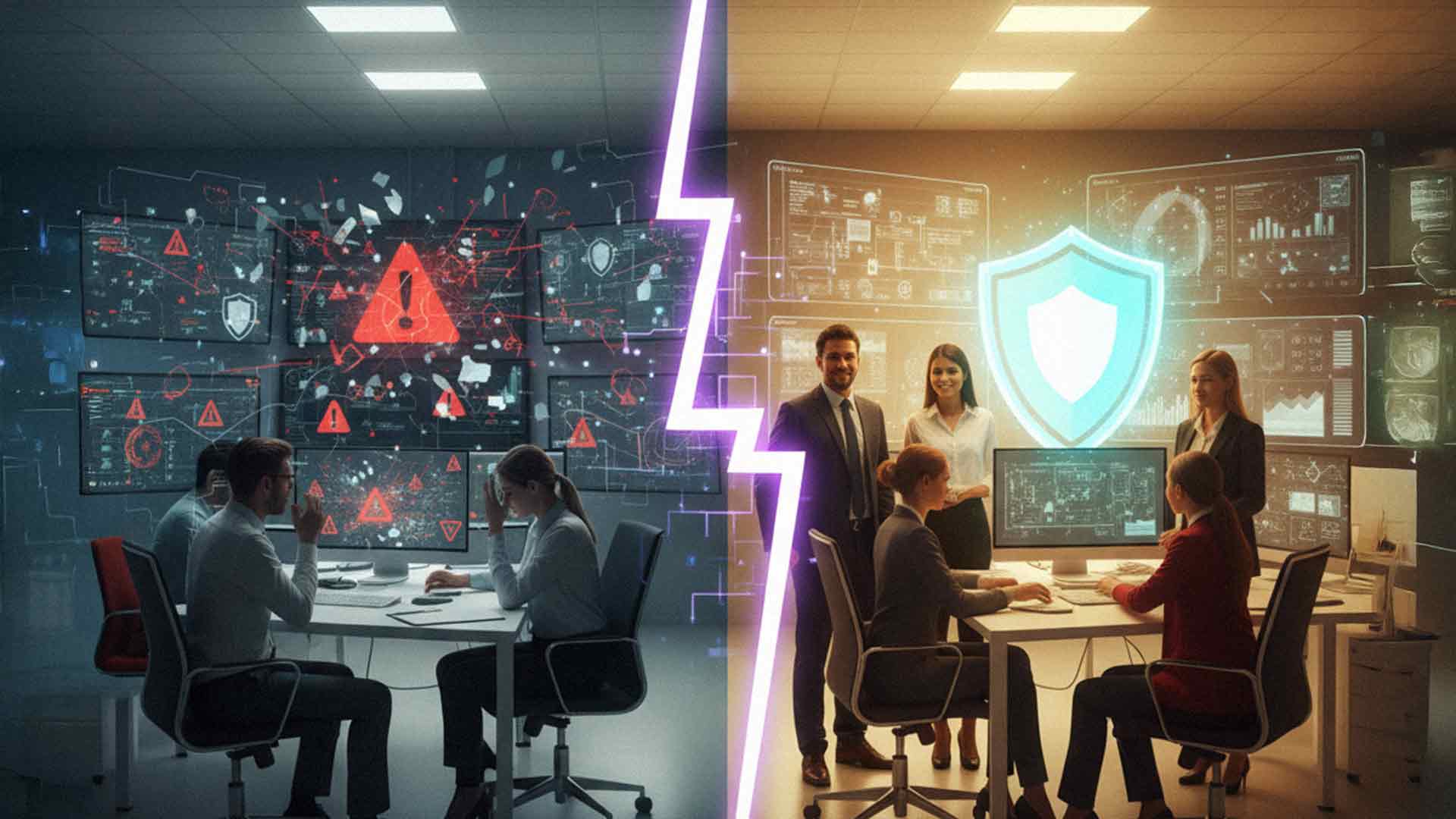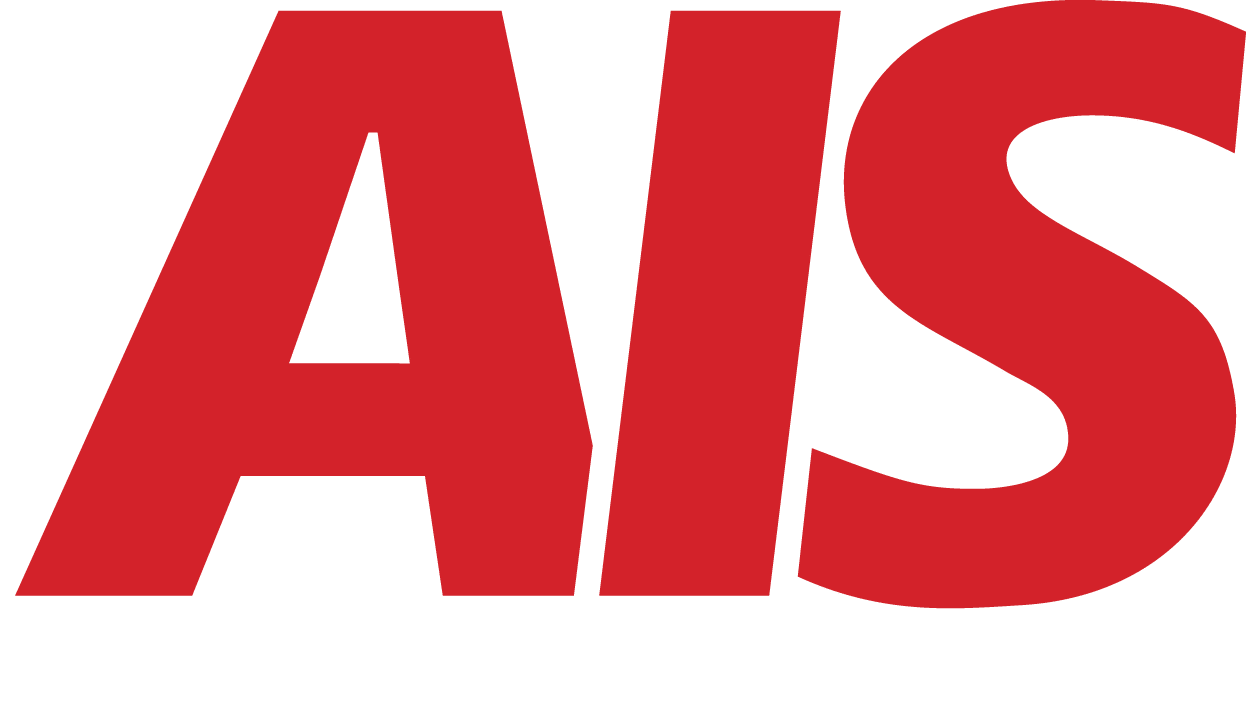Myth vs Reality: What SMBs Still Get Wrong About Cybersecurity
October 14th, 2025 | 6 min. read

Cybersecurity is no longer optional for small and midsize businesses.
Yet despite growing awareness, many SMB leaders still operate under outdated or dangerous assumptions about how cyberattacks happen and who they affect.
In our work with organizations across Las Vegas and Southern California, we hear the same misconceptions again and again. Unfortunately, these myths often lead to inaction, leaving businesses vulnerable to attacks that could have been prevented.
In this article, we separate myth from reality to help you understand where SMBs are still getting cybersecurity wrong and what you can do to protect your organization.
Myth #1: “We’re too small to be a target.”
Reality: Cybercriminals target small businesses precisely because they are small.
Hackers know that SMBs often have fewer resources, smaller IT teams, and less formal security policies.
They also understand that smaller companies may store valuable data, such as customer records, credit card numbers, or healthcare information, without the sophisticated defenses that larger enterprises maintain.
According to multiple studies, nearly half of all cyberattacks now target businesses with fewer than 250 employees. Attackers use automated tools to scan the internet for vulnerable systems, meaning your company’s size does not protect you.
Cybercrime is a numbers game. Hackers cast a wide net, exploiting the easiest targets first. Whether you have 10 employees or 1,000, if your systems are exposed, you are a potential victim.
Myth #2: “We already have antivirus software, so we’re safe.”
Reality: Traditional antivirus alone is, unfortunately, no longer enough.
While antivirus programs were once a cornerstone of protection, today’s threats have evolved far beyond what signature-based tools can detect.
Modern cyberattacks use tactics like fileless malware, credential theft, and zero-day exploits that bypass basic antivirus solutions.
Effective cybersecurity in 2025 and beyond requires layered protection that includes:
- Endpoint detection and response (EDR) for real-time threat monitoring.
- Multifactor authentication (MFA) to prevent unauthorized logins.
- Next-generation firewalls and DNS filtering to block malicious traffic.
- Regular vulnerability scanning and patch management.
Antivirus still plays a role, but it is only one small part of a much larger security ecosystem. Businesses that rely on it alone are leaving major gaps uncovered.
Myth #3: “Our data is in the cloud, so it’s automatically secure.”
Reality: Cloud platforms are secure, but your configurations may not be!
Providers like Microsoft, Google, and Amazon invest billions in securing their infrastructure. However, the shared responsibility model means that while they protect the platform, you are responsible for securing your data within it.
Common mistakes include:
- Weak access controls and passwords.
- Failing to enable MFA for cloud logins.
- Storing sensitive files in publicly accessible folders.
- Not reviewing audit logs or monitoring for unusual activity.
Misconfigurations are one of the most common causes of cloud breaches. A secure cloud setup requires ongoing management, user education, and regular security reviews. Partnering with a managed IT provider can help you maintain that oversight.
Myth #4: “Cybersecurity is an IT issue, not a leadership issue.”
Reality: Cybersecurity is a business issue that demands executive attention.
Data breaches impact far more than technology. They disrupt operations, erode customer trust, and create financial losses that can last for years.
When leadership views cybersecurity as strictly an IT function, critical decisions about investment and policy are often delayed or underfunded.
Effective security requires buy-in from every level of leadership. Executives should:
- Review security reports regularly.
- Include cybersecurity in strategic planning.
- Allocate resources for staff training and updated tools.
- Encourage a culture where reporting suspicious activity is supported and rewarded.
When leadership takes ownership of cybersecurity, it signals to employees, partners, and customers that the business takes protection seriously.
Myth #5: “Compliance means we’re secure.”
Reality: Compliance is a starting point, not a guarantee of safety.
Frameworks like HIPAA, PCI, and NIST are important for setting minimum security standards. However, compliance only measures whether your organization meets specific regulatory requirements at a moment in time.
Attackers do not care about checklists. They look for any weakness, regardless of whether it appears in an audit. Many technically compliant organizations have still suffered major breaches.
To stay protected, treat compliance as the floor, not the ceiling. Pair it with continuous monitoring, employee education, and regular penetration testing. True cybersecurity goes beyond paperwork; it is about daily vigilance and improvement.
Myth #6: “If we get hacked, we’ll just restore from backup.”
Reality: Backups are vital, but recovery is not always simple.
Ransomware groups have become more sophisticated, often targeting backups first. In some cases, they encrypt or delete backup files, leaving victims without a clean recovery option. Others use double or quadruple extortion, threatening to release sensitive data even after payment or restoration.
To make backups truly effective:
- Store them offline or in a separate cloud environment.
- Test restorations regularly to verify integrity.
- Use immutable storage that prevents modification or deletion.
- Protect backup credentials with MFA.
Having backups is essential, but ensuring they are secure and recoverable is what makes them valuable.
Myth #7: “Our employees would never fall for a phishing email.”
Reality: Anyone can fall for a well-crafted attack.
Phishing remains the most common entry point for cyber incidents because it works. Modern phishing emails are highly personalized, often referencing real projects, coworkers, or customers. Some use compromised accounts from trusted vendors, making them nearly impossible to identify at a glance.
Even experienced professionals have clicked on malicious links or opened infected attachments. The difference between vulnerability and resilience comes down to training and repetition.
Regular security awareness programs, phishing simulations, and clear reporting procedures help employees recognize and react appropriately. Cybersecurity is a skill that improves with practice.
Myth #8: “Cybersecurity costs too much for a small business.”
Reality: The cost of an attack is far higher than the cost of prevention.
A single ransomware incident can cost tens or hundreds of thousands of dollars when you factor in downtime, recovery, and lost reputation. The average cost of a data breach for an SMB now exceeds $200,000, according to recent industry studies.
Meanwhile, proactive security investments, such as managed monitoring, MFA, and employee training, cost a fraction of that.
Think of cybersecurity as insurance for your operations. You would not leave your physical office unlocked, and your digital environment deserves the same protection.
Small, consistent investments in prevention yield significant savings in risk reduction and peace of mind.
The Reality: Cybersecurity Is Everyone’s Responsibility
The truth is that cybersecurity is not a one-time project or a single product. It is a continuous effort that involves technology, process, and people.
Building resilience starts with awareness and ends with action. Every business, regardless of size, must:
- Educate employees on how to recognize social engineering.
- Implement layered security with monitoring and backups.
- Regularly test and update systems.
- Involve leadership in setting the tone for protection.
Cyber threats are not slowing down, but businesses that commit to proactive defense can stay one step ahead.
Your Next Steps: Debunking Small Business Cybersecurity Myths
Cybersecurity Awareness Month serves as a perfect reminder that knowledge is the first line of defense. Take time to review your security posture and challenge assumptions that may no longer hold.
Ask your leadership team:
- What cybersecurity myths have influenced our decisions?
- Do we have a documented incident response plan?
- How often do we test backups and train staff?
- When was our last professional risk assessment?
If the answers leave room for improvement, that is the perfect opportunity to act. AIS is here to help you build a plan that fits your goals, budget, and business realities.
A true southerner from Atlanta, Georgia, Marissa has always had a strong passion for writing and storytelling. She moved out west in 2018 where she became an expert on all things business technology-related as the Content Producer at AIS. Coupled with her knowledge of SEO best practices, she's been integral in catapulting AIS to the digital forefront of the industry. In her free time, she enjoys sipping wine and hanging out with her rescue-dog, WIllow. Basically, she loves wine and dogs, but not whiny dogs.
Topics:



